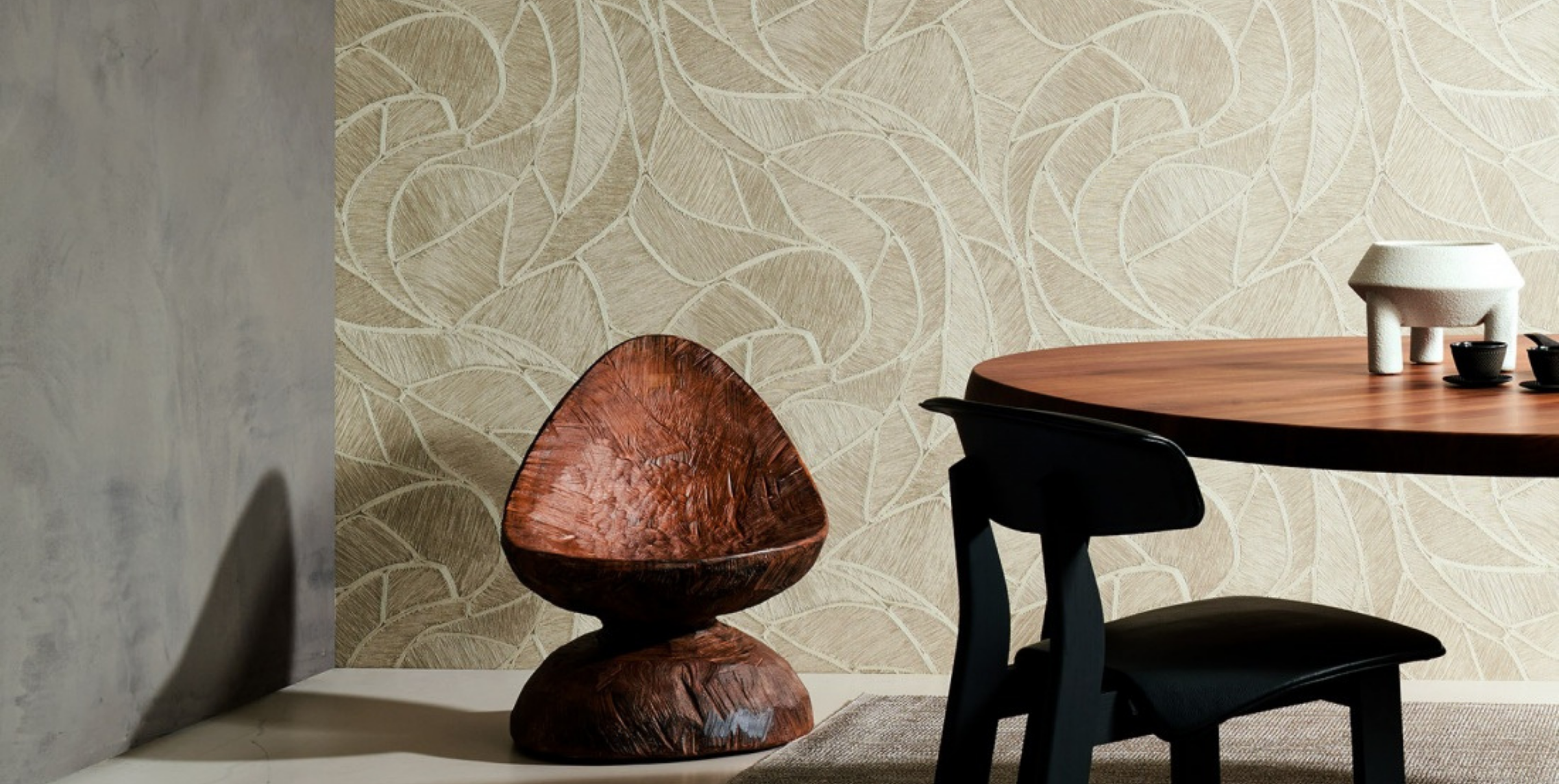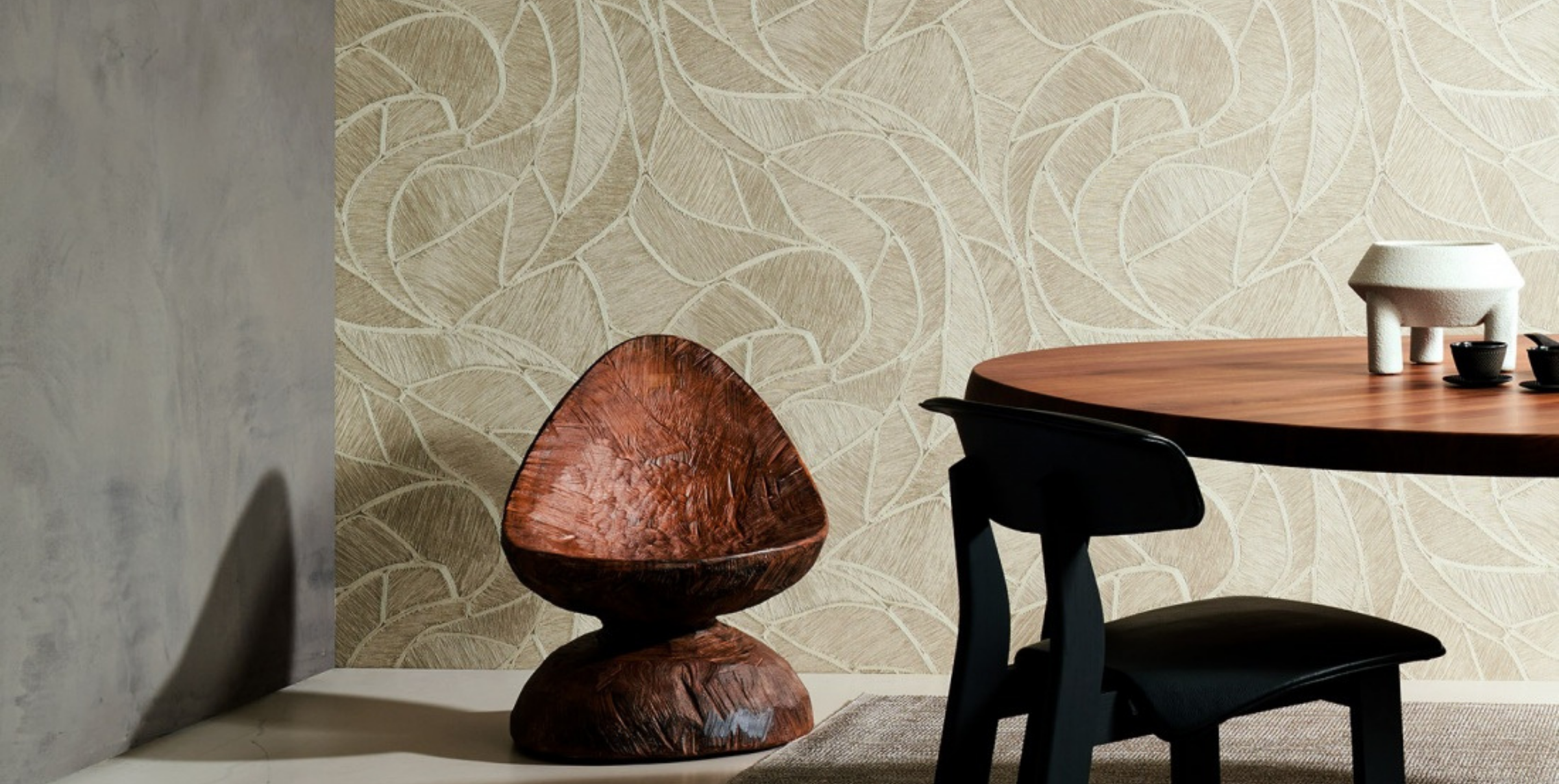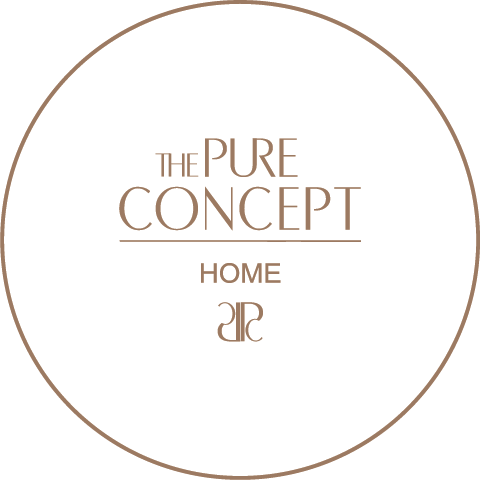

AND SOMETIMES WALLPAPERS ARE THE WAY FORWARD
Here’s why – and what’s that one detail you need to look for in statement wallpapers.
First and foremost, choosing one, or a few good wallpapers, means you’re good to go for several years. Yes, sometimes, the initial investment with wallpapering may be high. But, it’s certainly preferred over the tediousness of replastering and painting ever so often.
Wallpaper is customisable, just like paint: but it’s faster to work with. Changing your decision as you’re increasingly charmed by the versatility, is less stressful with reams of paper that can be removed and relayered.
We discuss this often, in-store, and at our studio: and some of us feel that the storytelling of the space can be more ‘dimensional’ with wallpapers. The drama of colour block canvases, or waves of colour gradients; of single, or all-over motif placements, and seemingly animated patterns, gives creative freedom to engage with the energies of the space.
SO… WHAT’S THAT ONE DETAIL TO LOOK OUT FOR WITH WALLPAPER?

We say its texture.
Think about it: as soon as we enter a space, we’re ‘embraced’ by this soothing, yet spirited wallpaper, and we love it. We ‘see’ it immediately and if there’s something interesting in the details, we want to ‘touch’ it immediately as well.
That ‘something interesting’ is the defining texture of the wallpaper. It could be smooth, matte, glossy, a little ‘raised,’ ‘grainy,’ or ‘segmented,’ depending on the construction, or artwork related surface detailing.
The point that settles into the heart here, is that we’re interacting with the wallpaper, and its interacting back, telling us what it’s doing to add life to the space.
WHAT KIND OF TEXTURED WALLPAPERS ARE REALLY TELLING THEIR STORY THIS YEAR?
Noiseless textures that don’t compete with their own colour stories. If a wallpaper feels versatile, it probably has a timeless inspiration shaping it, which is comfortable because it’s familiar or has personal relatability. Like a textile-weave effect, especially if it can be appreciated against classic neutrals, and muted, soft pastels.
The right texture can really help create the feeling of an expansive surrounding landscape. It should be assertive enough to be evident, but graceful enough to accommodate everything else that surrounds it: from the ceiling, lighting, and decorative accents, to furniture layouts and indoor plantscapes.
For instance, we’re all for the simple genius of this paper-weaving inspired textured wallpaper.

It’s not just colour, but colour tone that helps define textures. The inherent warmth or coolness of a colour can really impact how compact, roomy, or welcoming a space can feel.
An experimental mix of tones will find many takers. Unless just the one mood is favoured for various personal reasons, most spaces want cool tones evoking meditative calm and languid relaxation, blended with warm tones for vivacity and vitality. Additionally, the warm or cool undertones of neutral colours can really help balance out this blend.
Natural fibre wallpapers will be brought home for their unpretentious beauty and reincarnated, repurposed charms. The texture – of the fibre itself, and of how the final product has been layered and woven – will add subtle touches of light or colour play to spaces. This will show how thoughtfully chosen details express tastes that have true soul.
Botanical inspirations will be as bold and innovative as ever. Fruit and flower, flower and bird, or leafy twine and budding twig combinations symbolise hope, cheer, and a zest for life, as they always have. We’re limited only by our imagination, and our motivation to find what we’re looking for, insofar as flora-fauna themed wallpapers are concerned.

However, taking it up a notch from hand-painted styles and embossed digital prints, will be inlaid thread detail wallpapers, reinterpreting Nature-inspired organic silhouettes. The embroidery itself brings its unique texture, enhanced further by the shape, or tracing of its design.
TAKE CARE OF THAT BELOVED TEXTURE
Let’s start with the application itself. Papering over previous layers of wallpaper is doable, but depending on thickness, and raised-surface detailing, starting from scratch instead might be worth it. Good quality wallpapers are always peelable, or strippable in a way that’s not distressing.
Painting over wallpaper doesn’t do justice to the beauty that once was there, or the one that’s been chosen in the present time.
Dust can usually be wiped off lightly, using a clean, lint-free cloth. Stains should be dealt with as soon as possible before they get a chance to dry, with some warm, clean water, and a clean, lint-free cloth.
Some vacuum cleaners also come with a wallpaper-friendly attachment, or instructions for whether they can be used on wallpapers at all. When in doubt, it’s always better to consult the professionals who would’ve helped with the wallpapering to begin with.
It would be a pity indeed, to realise that the painstakingly developed texture of a beautiful wallpaper was ruined, not because of an accident, but because of negligence or because of not availing otherwise available expert support.


